Abstract
A comparison is made of lung function tests and radiographic findings in 20 asthmatic patients with allergic bronchopulmonary aspergillosis paired in terms of sex, age, and duration of asthma with 20 other asthmatics in whom the diagnosis of aspergillosis was excluded in order to see if the aspergillosis causes more lung damage. One hundred per cent of the patients with aspergillosis and 75% of the patients with asthma alone showed a significantly reduced forced expiratory volume in one second (FEV1) before bronchodilator. All the patients in the two groups had a significantly reduced maximal expiratory flow at 50% vital capacity breathing air (V50air) but the severity of the reduction was statistically greater in the aspergillosis group. Reversibility in FEV1 of 15% and more was found in 50% of patients with asthma alone as against 31% of patients with aspergillosis. The degree of reversibility of FEV1 was also statistically greater in patients with asthma alone. Improvement of less than 20% of V50 after helium-oxygen breathing was found in 33% of the patients with asthma alone and in 75% of the patients with aspergillosis. Patients with aspergillosis also showed significantly (0-001 less than P less than 0-01) more reduced gas transfer factor. Radiological features of overinflation were as common in the two groups. Tubular and ring shadows were found in 95% and 60% respectively of patients with aspergillosis as against 45% and 15% of patients with asthma alone.
Full text
PDF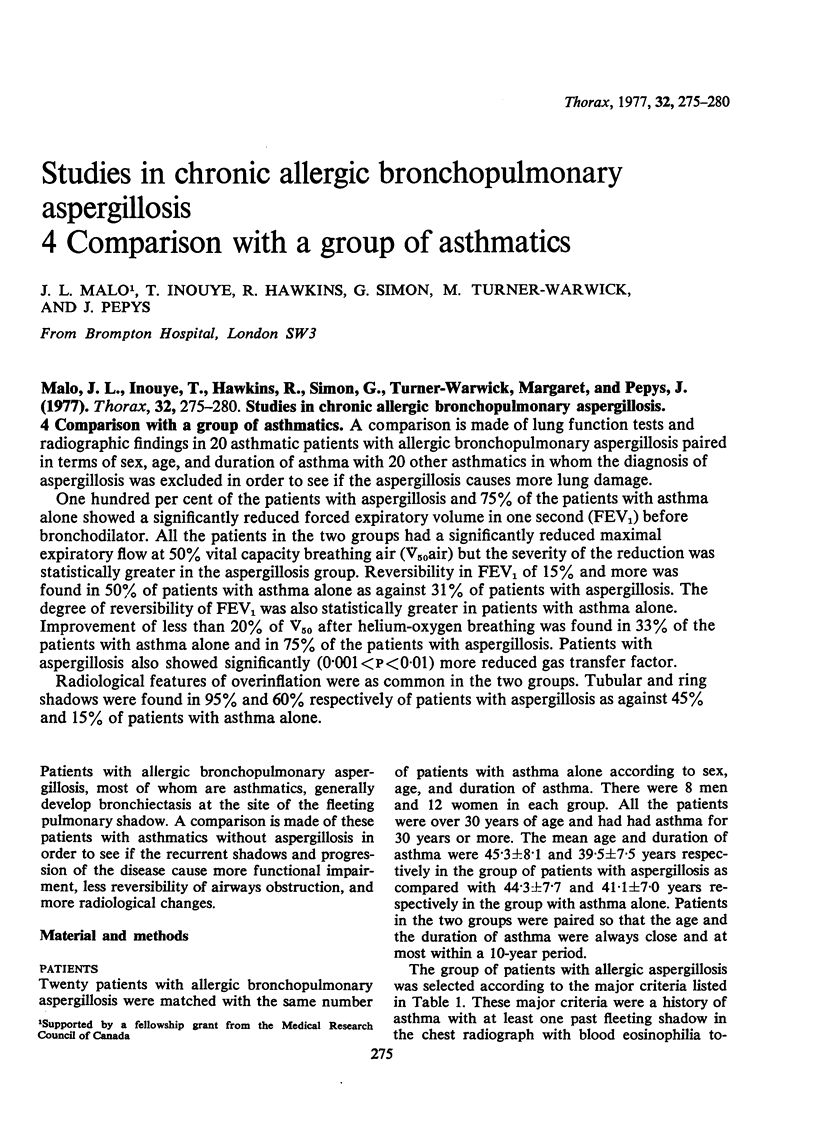
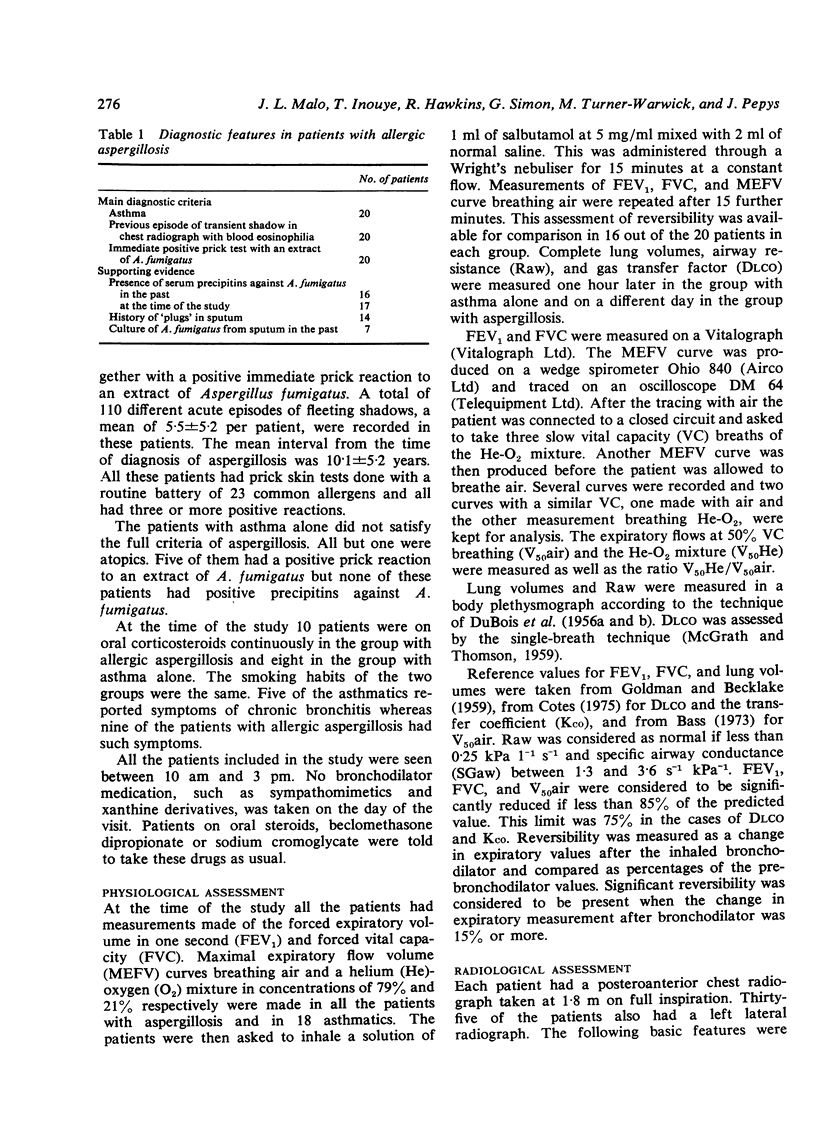
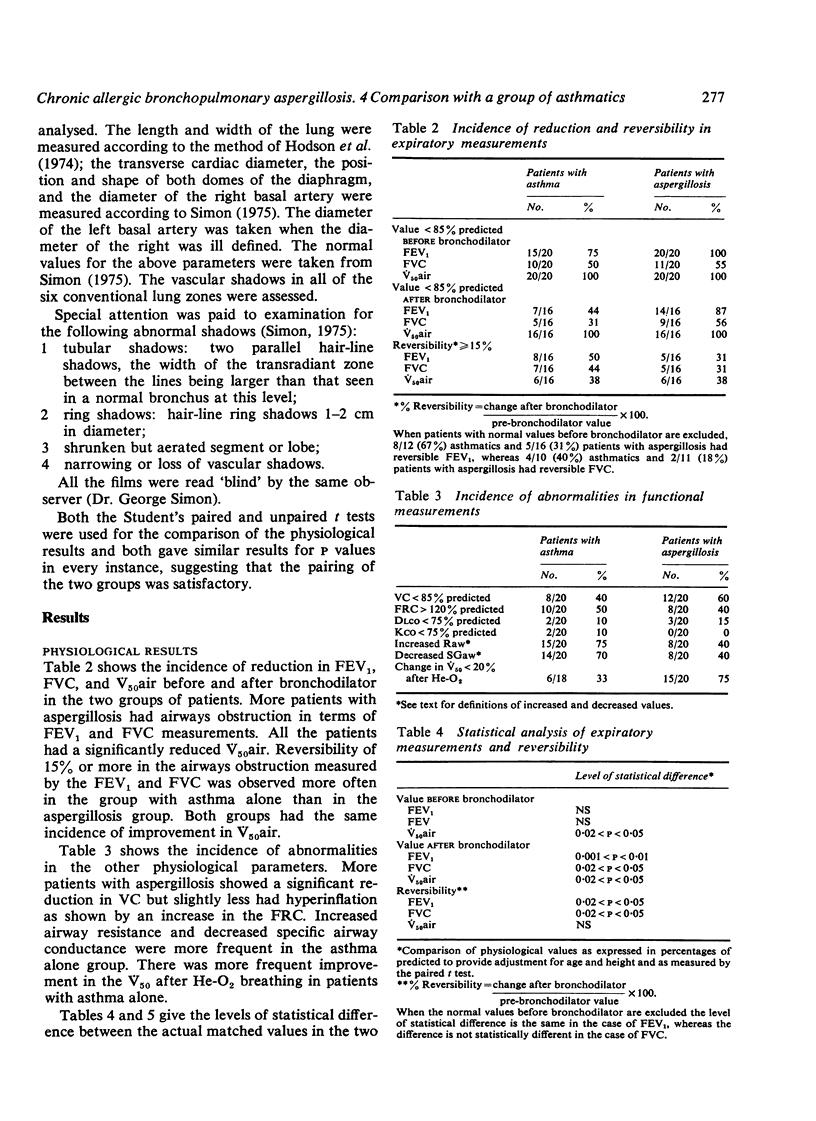
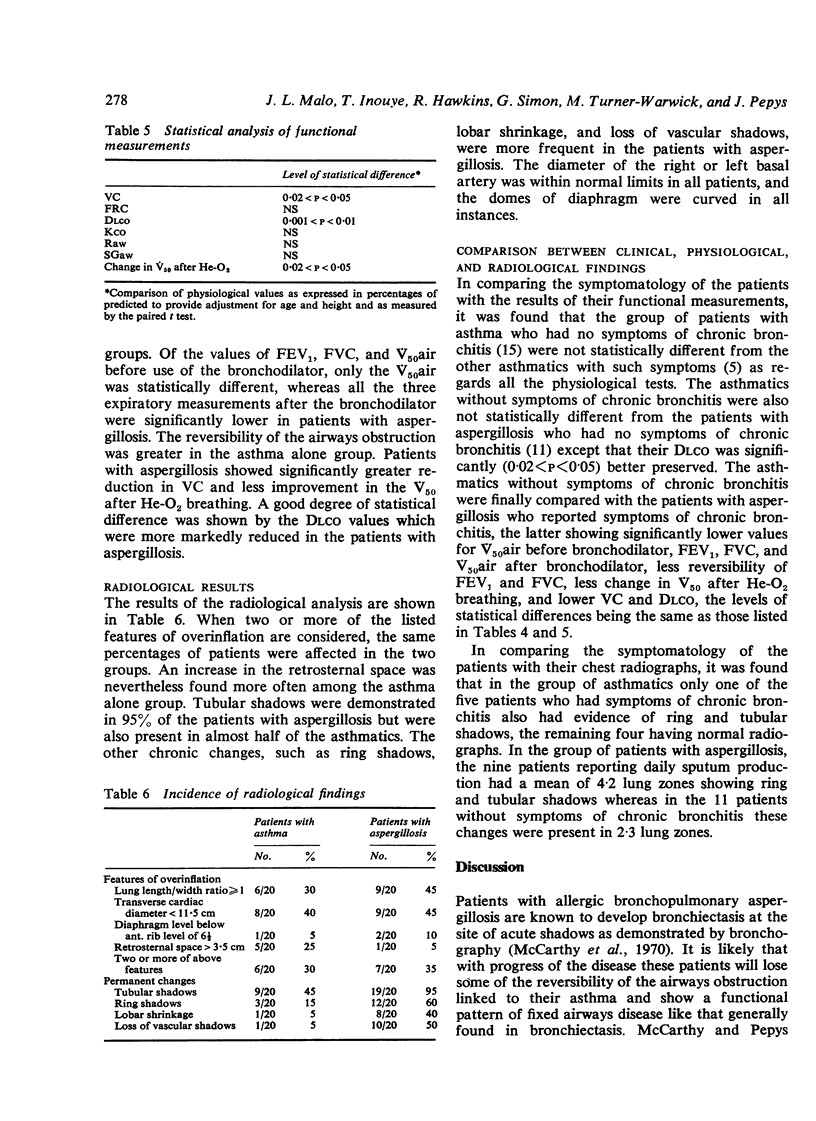
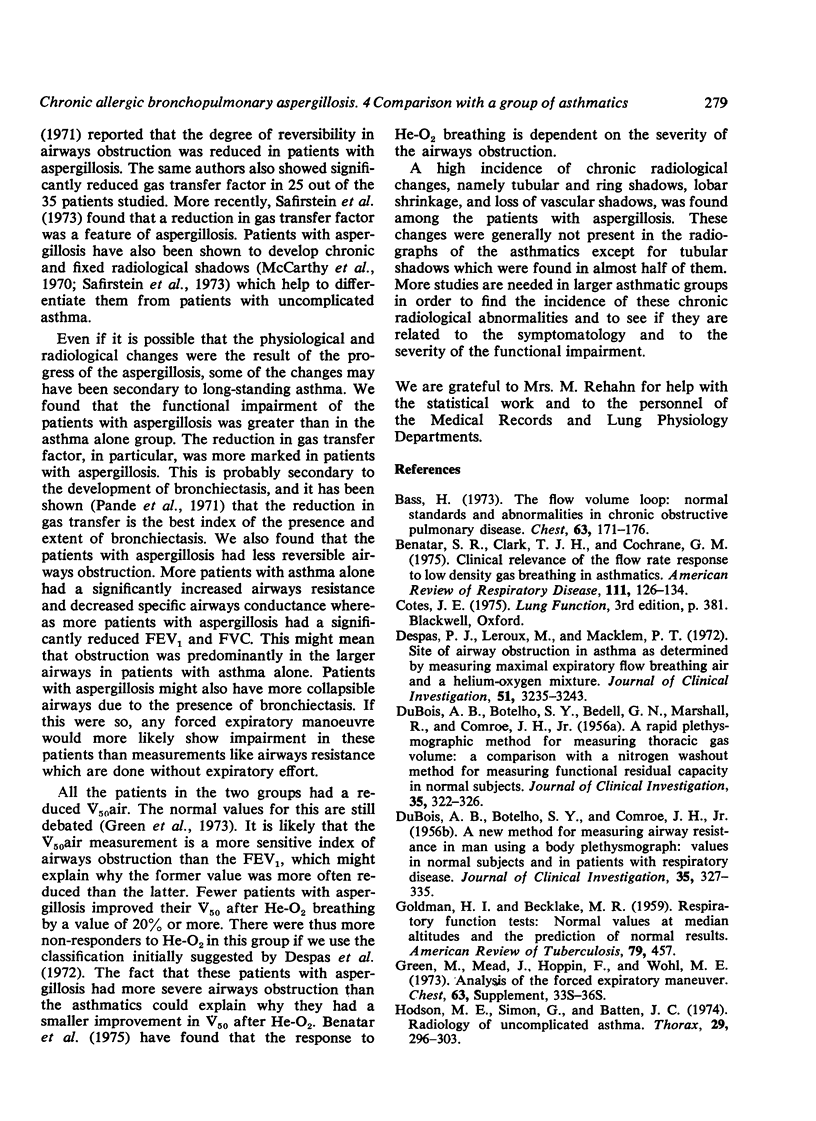
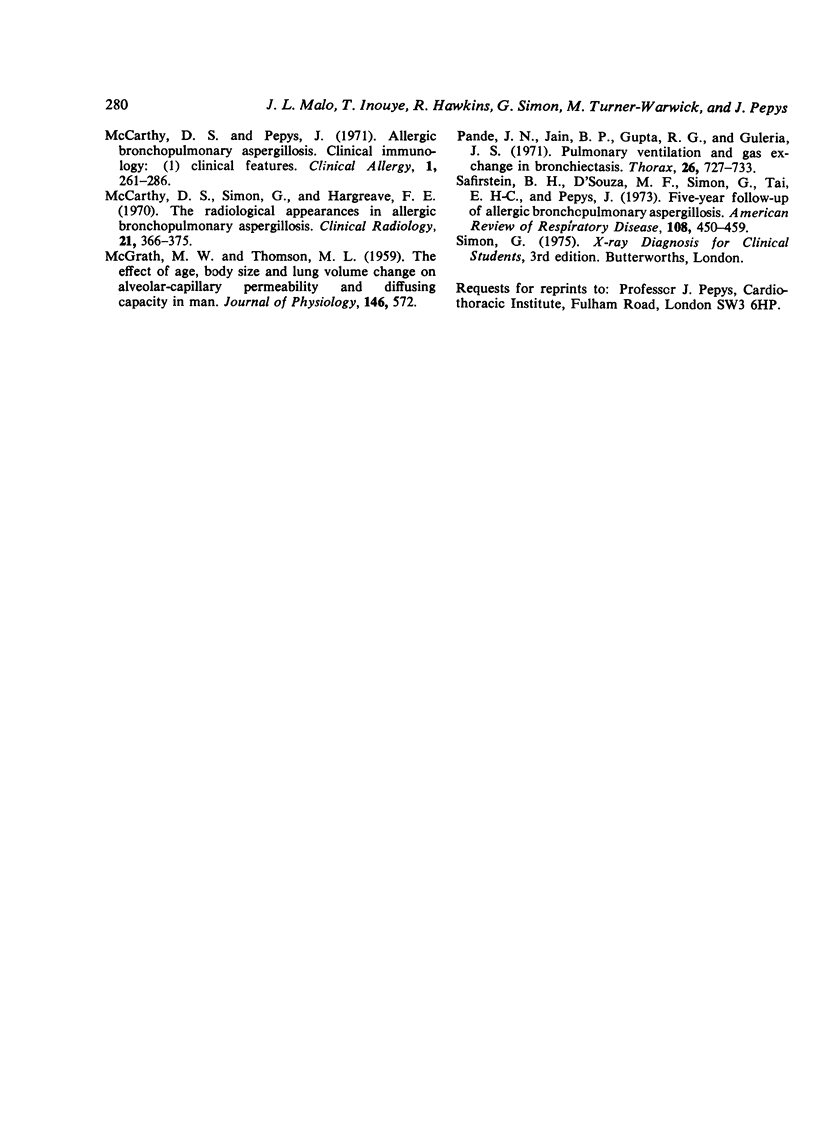
Selected References
These references are in PubMed. This may not be the complete list of references from this article.
- Bass H. The flow volume loop: normal standards and abnormalities in chronic obstructive pulmonary disease. Chest. 1973 Feb;63(2):171–176. doi: 10.1378/chest.63.2.171. [DOI] [PubMed] [Google Scholar]
- Benatar S. R., Clark T. J., Cochrane G. M. Clinical relevance of the flow rate response to low density gas breathing in asthmatics. Am Rev Respir Dis. 1975 Feb;111(2):126–134. doi: 10.1164/arrd.1975.111.2.126. [DOI] [PubMed] [Google Scholar]
- DUBOIS A. B., BOTELHO S. Y., BEDELL G. N., MARSHALL R., COMROE J. H., Jr A rapid plethysmographic method for measuring thoracic gas volume: a comparison with a nitrogen washout method for measuring functional residual capacity in normal subjects. J Clin Invest. 1956 Mar;35(3):322–326. doi: 10.1172/JCI103281. [DOI] [PMC free article] [PubMed] [Google Scholar]
- DUBOIS A. B., BOTELHO S. Y., COMROE J. H., Jr A new method for measuring airway resistance in man using a body plethysmograph: values in normal subjects and in patients with respiratory disease. J Clin Invest. 1956 Mar;35(3):327–335. doi: 10.1172/JCI103282. [DOI] [PMC free article] [PubMed] [Google Scholar]
- Despas P. J., Leroux M., Macklem P. T. Site of airway obstruction in asthma as determined by measuring maximal expiratory flow breathing air and a helium-oxygen mixture. J Clin Invest. 1972 Dec;51(12):3235–3243. doi: 10.1172/JCI107150. [DOI] [PMC free article] [PubMed] [Google Scholar]
- GOLDMAN H. I., BECKLAKE M. R. Respiratory function tests; normal values at median altitudes and the prediction of normal results. Am Rev Tuberc. 1959 Apr;79(4):457–467. doi: 10.1164/artpd.1959.79.4.457. [DOI] [PubMed] [Google Scholar]
- Green M., Mead J., Hoppin F., Wohl M. E. Analysis of the forced expiratory maneuver. Chest. 1973 Apr;63(Suppl):33S–36S. doi: 10.1378/chest.63.4_supplement.33s. [DOI] [PubMed] [Google Scholar]
- Hodson M. E., Simon G., Batten J. C. Radiology of uncomplicated asthma. Thorax. 1974 May;29(3):296–303. doi: 10.1136/thx.29.3.296. [DOI] [PMC free article] [PubMed] [Google Scholar]
- McCarthy D. S., Simon G., Hargreave F. E. The radiological appearances in allergic broncho-pulmonary aspergillosis. Clin Radiol. 1970 Oct;21(4):366–375. doi: 10.1016/s0009-9260(70)80070-8. [DOI] [PubMed] [Google Scholar]
- McGRATH M. W., THOMSON M. L. The effect of age, body size and lung volume change on alveolar-capillary permeability and diffusing capacity in man. J Physiol. 1959 Jun 11;146(3):572–582. doi: 10.1113/jphysiol.1959.sp006212. [DOI] [PMC free article] [PubMed] [Google Scholar]
- Pande J. N., Jain B. P., Gupta R. G., Guleria J. S. Pulmonary ventilation and gas exchange in bronchiectasis. Thorax. 1971 Nov;26(6):727–733. doi: 10.1136/thx.26.6.727. [DOI] [PMC free article] [PubMed] [Google Scholar]
- Safirstein B. H., D'Souza M. F., Simon G., Tai E. H., Pepys J. Five-year follow-up of allergic bronchopulmonary aspergillosis. Am Rev Respir Dis. 1973 Sep;108(3):450–459. doi: 10.1164/arrd.1973.108.3.450. [DOI] [PubMed] [Google Scholar]


